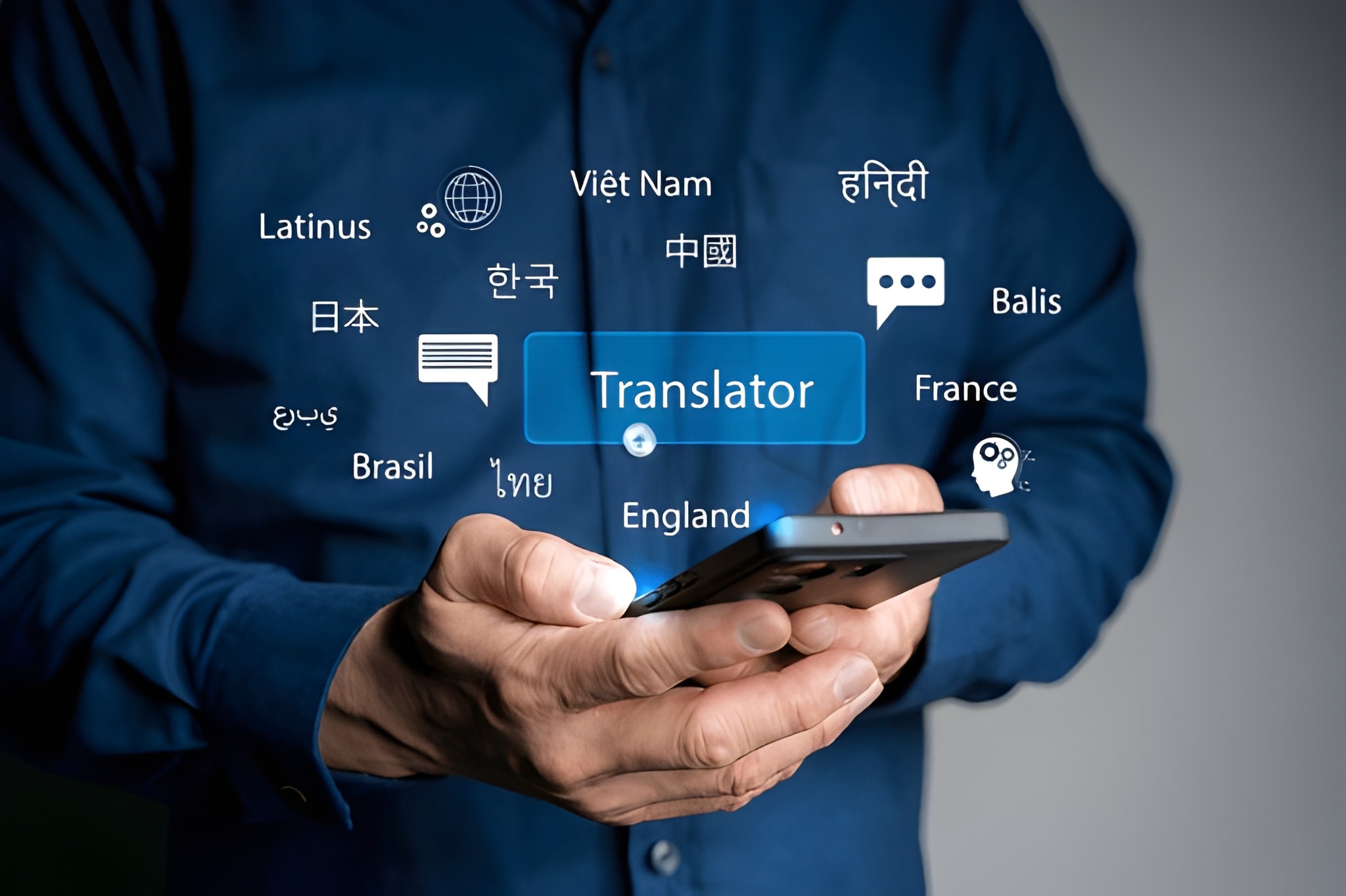When Close Languages Still Feel Far
Have you ever overheard someone speaking Sylheti and thought, “Wait, isn’t that just Bangla?”
You’re not alone. Many Bangladeshis and even Bengali speakers worldwide get confused. Sylheti and Bangla share a lot, but they’re not the same.
I remember once sitting on a train in Dhaka when a Sylheti passenger asked me a question. I speak fluent Bangla, yet I couldn’t catch every word. I nodded politely, but inside, I was lost. That’s when I realized: if two related languages can create this much confusion, imagine how much harder it gets for students, travelers, or professionals who really need an accurate understanding.
So the big question is: Does a Sylheti-to-Bangla translator online exist? And if so, is it reliable?
Why This Question Matters
At first glance, Sylheti and Bangla might look like cousins in the same family. They share vocabulary, cultural references, and geography. But here’s the catch:
- Pronunciation is different. Sylheti often drops certain sounds or uses alternatives.
- Grammar shifts subtly. Words can mean something slightly different.
- Vocabulary diverges. Some Sylheti words feel completely foreign to Bangla speakers.
For everyday life, this can cause funny misunderstandings. But for students reading in Sylheti, migrants abroad speaking to Bangla officials, or even travelers visiting Sylhet, these gaps become serious.
That’s why many people search for a Sylheti to Bangla translator online—hoping to find a quick digital bridge.
Step 1: Understanding Sylheti vs. Bangla
Before we check online translators, it helps to know why the problem exists.
- Bangla (Bengali): The state language of Bangladesh, spoken by over 230 million people (Ethnologue, 2024).
- Sylheti: A regional language/dialect spoken by 11–13 million people, mostly in Sylhet Division and among diaspora communities in the UK, the Middle East, and the US.
Here’s the twist: some linguists argue Sylheti is just a dialect of Bangla. Others claim it’s a separate language with its own structure and script (historically written in Sylheti Nagri script).
No wonder apps struggle: should they treat Sylheti as “Bangla Lite” or as its own independent language?
Step 2: What Online Translators Currently Exist?
Here’s what I found after testing several tools:
Google Translate
- Does it support Sylheti? Not directly.
- Workaround: You can try “Bangla” mode, but Sylheti words often confuse the system.
- Result: Partial understanding. It catches familiar Bangla-like words but misses unique Sylheti phrases.
Sylheti Dictionary Projects (Community-built)
- Websites like sylheti.org and small GitHub projects exist.
- Strength: Focused on Sylheti words.
- Weakness: Limited database, clunky interface, not always mobile-friendly.
iOS Translate / Apple Translate
- Supports Bangla, but not Sylheti as a separate option.
- If you type Sylheti words, it often fails.
Microsoft Translator
- Similar to Google: no direct Sylheti option.
- It may work if you mix Sylheti-Bangla text, but accuracy is low.
Experimental AI Projects
- Some research projects are training AI models on Sylheti data.
- Example: University linguistics departments have small corpora, but no mainstream apps yet.
Step 3: Workarounds People Actually Use
Since no polished Sylheti to Bangla translator online exists yet, here’s what people do:
-
Hybrid Method: Type Sylheti into Google Translate → Get Bangla guess → Cross-check with a Sylheti dictionary.
-
Community Forums: Sylheti Facebook groups or diaspora communities often help translate.
-
AI Tools (like ChatGPT): You can paste Sylheti text and ask for Bangla equivalents. Not always perfect, but surprisingly effective for casual use.
-
Voice-to-Text Apps: Record Sylheti → Convert to Bangla via speech recognition. Works only for common phrases.
Comparison Table: Sylheti to Bangla Translator Options
| Tool / Method | Supports Sylheti? | Accuracy | Best Use Case | Weakness |
|---|---|---|---|---|
| Google Translate | (only Bangla) | ⭐⭐ | Quick guesses | Misses unique Sylheti words |
| Apple Translate | ❌ | ⭐ | iPhone users | Treats Sylheti as gibberish |
| Microsoft Translator | ❌ | ⭐⭐ | Casual testing | Low accuracy |
| Sylheti.org (Dictionary) | (partial) | ⭐⭐⭐ | Word lookups | Small database |
| ChatGPT / AI tools | (informal) | ⭐⭐⭐⭐ | Conversations, casual text | Needs clear input |
| Community Groups | (human help) | ⭐⭐⭐⭐ | Rare phrases, culture-specific words | Slow, not automated |
Real-Life Stories
- Students: A Sylheti student studying in Dhaka told me she often had to “re-translate” textbooks into her Sylheti-influenced Bangla. Without community-built dictionaries, she said, her learning curve would’ve been steeper.
- Travelers: A British-Sylheti tourist in Sylhet shared that locals often switched between Sylheti and Bangla mid-sentence. Google Translate couldn’t keep up. He relied on his cousins to help.
The Core Problem: Limited Data
AI thrives on data. Google Translate, DeepL, and Microsoft Translator all became powerful because they were trained on millions of documents, books, subtitles, and online texts. But here’s the challenge with Sylheti:
-
Low digital presence: Most Sylheti speakers use Bangla or English online.
-
Rarely written: Sylheti is mainly a spoken language. Historically, there was a Sylheti Nagri script, but today, it’s hardly used.
-
Diaspora influence: In the UK, many Sylheti speakers mix English words, creating hybrid phrases that confuse AI.
That means translation apps don’t have enough parallel text corpora (aligned Sylheti–Bangla texts) to learn from. No training data = weak results.
AI Limitations in Rare Language Translation
Even if Sylheti data existed, AI faces hurdles:
-
Phonetic spelling issues
Sylheti is often typed phonetically in Bangla or English letters. One word can appear in 3–4 spellings. AI struggles to unify them. -
Context loss
Example: The Sylheti word “nai” might mean “not here” or “doesn’t exist”. Without full context, AI guesses wrong. -
Dialect overlap
Sylheti overlaps with Chittagonian and Standard Bangla in some words. AI sometimes blends them together incorrectly. -
Voice recognition gap
Google’s speech recognition is tuned for Dhaka Bangla. Sylheti accents often get misheard completely.
So when you type Sylheti into Google Translate, the system sees “noise” instead of structured text.
Academic and Community Efforts
Despite the challenges, there are some bright spots.
-
University Projects:
Linguistics departments in Dhaka and London have worked on Sylheti speech corpora. These are small but growing datasets that could train better AI models. -
Community Dictionaries:
Websites like sylheti.org and apps built by diaspora groups in the UK aim to preserve Sylheti words. They’re not perfect translators but great resources for learners. -
NGO & Heritage Initiatives:
Cultural groups like the Sylheti Heritage Fund (UK) have sponsored digital tools to keep the language alive among younger generations. -
AI Research:
Some experimental models use transfer learning to train AI on Bangla, then fine-tune it for Sylheti. Early results are promising but not yet consumer-ready.
Why It Matters for the Sylheti Diaspora
The need for a Sylheti to Bangla translator online is most urgent among diaspora communities:
-
UK Diaspora: Over half of Bangladeshi-origin people in the UK are from Sylhet. Many first-gen speakers know Sylheti better than Bangla. Children grow up bilingual but often need tools to bridge gaps with relatives in Bangladesh.
-
Middle East Migrants: Sylheti workers abroad often rely on apps to communicate with Bangladeshi officials, many of whom expect Standard Bangla. Without accurate tools, mistakes happen in paperwork.
-
US & Canada: Younger Sylheti immigrants sometimes struggle to connect with grandparents back home. They search online for ways to translate Sylheti family letters into Bangla or English.
For these communities, the lack of proper translators feels like being cut off from both heritage and opportunity.
Case Study: Students in London
A group of Sylheti-background students in London shared that while they speak Sylheti at home, their university research in Bangla studies requires Standard Bangla. One student said:
“I tried Google Translate, but it doesn’t recognize my Sylheti words. I had to ask my grandmother to ‘re-translate’ them into Bangla before I could use the app.”
This shows why an online Sylheti to Bangla translator would be such a powerful academic bridge.
What Could 2025 Bring?
The future isn’t hopeless. In fact, rare language translation is becoming a hot research field.
-
Google’s “1,000 Languages Initiative”: Google announced plans to support more low-resource languages. Sylheti could benefit in the coming years.
-
AI Custom Models: With tools like Hugging Face and custom LLMs, smaller communities can train Sylheti–Bangla models using open data.
-
Smartphones + Community Input: Imagine an iOS or Android app where Sylheti speakers contribute corrections. Over time, it would “learn” more accurately.
-
Integration with WhatsApp: Since Sylheti is spoken daily, a WhatsApp feature that recognizes Sylheti voice notes and outputs Bangla text would be revolutionary.
The Bigger Picture: Language Identity
This goes beyond technology. Sylheti speakers often feel their identity overlooked—treated as “just Bangla.” Having a Sylheti to Bangla translator online is not just about convenience; it’s about respecting linguistic diversity.
As one community leader in the UK put it:
“If Google Translate can support Icelandic (with under 400,000 speakers), why not Sylheti with over 11 million?”
That question lingers, and it’s pushing activists and developers to demand better recognition.
Step-by-Step Guide: Translating Sylheti into Bangla Today
Even though there’s no official Sylheti to Bangla translator online, you can still make do with creative methods. Here’s how many Sylheti speakers and learners handle it in real life.
Step 1: Start with Google Translate
-
Select Bangla as the input/output.
-
Type Sylheti words phonetically (for example, ami nai).
-
Google often picks up similarities and provides a Bangla equivalent.
Works best for common, shared words. But don’t expect accuracy with rare Sylheti vocabulary.
Step 2: Use Sylheti.org or Community Dictionaries
-
Look up Sylheti words in online databases.
-
Some mobile apps created by Sylheti communities list everyday vocabulary.
-
Example: Typing “goru” (cow) might show both Sylheti and Bangla meanings.
Great for word-to-word lookups when Google fails.
Step 3: Cross-Check with AI Tools
-
Copy the phrase into ChatGPT or other AI translators and ask: “Can you interpret this Sylheti word into Bangla?”
-
AI often gives a clearer explanation than machine-only translators.
Works surprisingly well for conversational phrases.
Step 4: Ask the Community
-
Join Sylheti groups on Facebook, WhatsApp, or Reddit.
-
Post phrases for others to translate into Standard Bangla.
-
Many diaspora members are willing to help.
Slower, but you’ll get human-accurate answers.
Step 5: For Voice, Use Speech-to-Text First
-
Record Sylheti voice notes.
-
Convert them into text using Bangla speech recognition apps.
-
Then run the text through Google Translate or AI for polishing.
Not smooth, but helpful for students and migrants dealing with documents.
FAQs: Sylheti to Bangla Translator Online
Q1: Does Google Translate support Sylheti?
Not directly. It only supports Bangla. But typing Sylheti words phonetically sometimes produces partial results.Q2: Is Sylheti a dialect or a language?
Linguists disagree. Some say it’s a dialect of Bangla; others consider it an independent language with its own history and script (Sylheti Nagri).Q3: Why is there no official Sylheti to Bangla translator app yet?
Because Sylheti has low digital presence. AI needs large datasets to work well, and Sylheti doesn’t have enough online text for training.Q4: Can ChatGPT translate Sylheti?
Yes, to some extent. If you type Sylheti words, AI models can often interpret them into Bangla or English, but accuracy depends on spelling and context.Q5: Will Sylheti ever be on Google Translate?
Possibly. Google’s 1,000 Languages Initiative aims to add more low-resource languages. With 11–13 million speakers, Sylheti is a strong candidate.Why It Matters for Students, Travelers, and Families
-
Students: Imagine being able to write essays or research in Bangla while speaking Sylheti at home. An online translator would bridge the classroom and household language.
-
Travelers: A visitor to Sylhet could understand local jokes, phrases, and slang that aren’t found in Bangla dictionaries.
-
Families Abroad: In the UK, younger generations often struggle with Bangla. Having Sylheti–Bangla translators would let them better connect with both grandparents and their heritage.
I’ve personally seen families in London mixing Sylheti and English at home. Kids grow up understanding Sylheti but can’t always write Bangla. Tools could change that.
The Future: Hope for 2025 and Beyond
The good news? Things are moving forward.
-
AI research labs are experimenting with Sylheti text recognition.
-
Diaspora developers are working on apps dedicated to Sylheti–Bangla translation.
-
Big tech companies (Google, Apple, Microsoft) are under pressure to support more regional languages as part of inclusivity drives.
When you step back, it makes sense. If apps can already translate voice notes in Spanish or WhatsApp stickers in Japanese, why not Sylheti? It’s only a matter of time.
Recap: Does a Sylheti to Bangla Translator Online Exist?
-
Direct Answer: Not fully. There’s no polished, official Sylheti–Bangla app yet.
-
Workarounds: Google Translate (partial), community dictionaries, AI tools like ChatGPT, and diaspora groups.
-
Why it’s hard: Limited online data, spoken more than written, multiple spellings.
-
Why it’s needed: Students, travelers, families abroad, and small businesses rely on it daily.
-
Future outlook: Likely to arrive soon as AI projects and community efforts grow.
So, what’s the bottom line?
The dream of a Sylheti to Bangla translator online isn’t fully real yet—but we’re closer than ever.A Friendly Call to Action
If you’re Sylheti-speaking and frustrated by the lack of tools, you’re not alone. Millions feel the same way. Here’s what you can do right now:
-
Try Google Translate for basics.
-
Use Sylheti.org or community apps for vocabulary.
-
Experiment with AI tools like ChatGPT for phrases.
-
Contribute corrections if you find community projects.
The more people use and share Sylheti online, the faster AI will learn it. So whether you’re a student in Dhaka, a shopkeeper in Sylhet, or a family in London—keep typing, speaking, and sharing Sylheti. That’s how tomorrow’s translators will get built.
And maybe, just maybe, the next time someone asks on a train in Sylhet, you won’t just nod politely—you’ll answer confidently in perfect Bangla.
References
-




